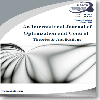The analysis of the interaction of the migration, diversity and permeability in parallel genetic algorithms
The analysis of the interaction of the migration, diversity and permeability in parallel genetic algorithms
___
- [1] Rebaudengo, M. and Reorda, M.S., An experimental analysis of effects of migration in parallel genetic algorithms, EWPDP93: IEEE/Euromicro Workshop on Parallel and Distributed Processing, Gran Canaria (E), Gennaio, 232-238 (1992).
- [2] Alba E. and Troya, J.M., Analyzing synchronous and asynchronous parallel distributed genetic algorithms, Future Generation Computer Systems 17, 451-465 (2001).
- [3] Cantú-Paz, E., Markov chain models of parallel genetic algorithms, IEEE Transactions of Evolutionary Computation, 4(3), 216-226 (2000).
- [4] Cantú-Paz, E., Migration policies, selection pressure, and parallel evolutionary algorithms, In Brave, S., Wu, A. (Eds.) Late Breaking Papers at the Genetic and Evolutionary Computation Conference. Orlando, FL (1999).
- [5] Cantú-Paz, E., Topologies, migration rates, and multi-population parallel genetic algorithms, GECCO-99:Proceedings of the Genetic and Evolutionary Computation Conference, San Francisco, CA: Morgan Kaufmann, 91-98 (1999).
- [6] Nowostawski, M. and Poli, R., Parallel genetic algorithm taxonomy, Proceedings of Third International Conference on Knowledge-based Intelligent Information Engineering Systems KES'99 (1999).
- [7] Surry, P.D. and Radcliffe, N.J., RPL2: A language and parallel framework for evolutionary computing, Springer-Verlag LNCS 866, 628-637 (1994).
- [8] Alba, E. and Troya, J.M., A survey of parallel distributed genetic algorithms, Complexity 4, 31-52 (1999).
- [9] Maeda, Y., Ishita, M.and Li, O., Fuzzy adaptive search method for parallel genetic algorithm with island combination process, International Journal of Approximate Reasoning 41, 59-73 (2006).
- [10] Hiroyasu, T., Miki, M. and Negami, M., Distributed genetic algorithms with randomized migration rate, IEEE Proc. of Systems, Man and Cybernetics Conference (SMC'99), 1, 689-694 (1999).
- [11] Berntsson, J. and Tang, M., A convergence model for asynchronous parallel genetic algorithms, The 2003 Congress on Evolutionary Computation, CEC'03, 4, 2627- 2634 (2003).
- [12] Kuvat, G., Adar, N., Canbek, S., Seke, E., Fast converging migration method in Parallel Genetic Algorithms, UMES 2007-National Young Researchers Symposium on Technical Training, Engineering and Education Sciences (in Turkish), 71-74, Kocaeli, Turkey, June (2007).
- [13] Kuvat, G., Adar, N., Seke, E., Canbek, S., New migration schemes for parallel genetic algorithms on cluster systems, INISTA 2007- International Symposium on Innovations in Intelligent Systems and Applications, 268-272, Istanbul, Turkey (2007).
- [14] Kuvat, G., Adar, N., Canbek, S., Seke, E., Analysis the fast converging migration method for various test functions, 12th National Congress and Exhibition on Electrical, Electronics, Computer, Biomedical Engineering (in Turkish), 313-316, Eskişehir, Turkey (2007).
- [15] Kuvat, G., Adar, N., Canbek, S., Seke, E., Migration methods, migration rate and parallel genetic algorithms, ASYU 2008 - International Symposium on Innovations in Intelligent Systems and Applications (in Turkish), 138- 142, Isparta, Turkey (2008).
- [16] Kuvat, G., Migration Methods and Dynamic Determination of Migration Parameters in Parallel Genetic Algorithms, Doctoral Dissertation (in Turkish), Department of Electrical and Electronics Engineering, Eskişehir Osmangazi University (2009).
- [17] Lazano, M., Herrera F. and Cano, J.R., Replacement strategies to preserve useful diversity in steady-state genetic algorithms, Information Sciences 178, 4421-4433 (2008).
- [18] Denzinger, J. and Kidney, J., Improving migration by diversity, The 2003 Congress on Evolutionary Computation, CEC'03, 1, 700- 707 (2003).
- [19] Li, Q. and Maeda, Y., Distributed adaptive search method for genetic algorithm controlled by fuzzy reasoning, IEEE International Conference on Fuzzy Systems, 2022-2027 (2008).
- [20] Adar, N. and Kuvat, G., Diversity and permeability in parallel genetic algorithms, Journal of the Institute of Science and Technology of Dumlupınar University (in Turkish), Num: 27, 55-66, April (2012)
- [21] Goldberg, D.E., Genetic algorithms in search, optimization & machine learning, Addison Wesley Publishing Company, USA (1989).
- [22] Alba, E., Luna, F., Nebro A.J. and Troya, J.M., Parallel heterogeneous genetic algorithms for continuous optimization, Parallel Computing 30, 699-719 (2004).
- [23] Oh, S., Kim, C.T. and Lee, J., Balancing the selection pressures and migration schemes in parallel genetic algorithms for planning multiple paths, Proceedings of the 2001 IEEE International Conference on Robotics & Automation, Seoul, Korea, May 21-26, 3314- 3319 (2001).
- [24] Cantú-Paz., E., On the effects of migration on the fitness distribution of parallel evolutionary algorithms, In Workshop on Evolutionary Computation and Parallel Processing at GECCO-2000, 3-6 (2000).
- ISSN: 2146-0957
- Yayın Aralığı: 4
- Yayıncı: Prof. Dr. Ramazan YAMAN
Free terminal time optimal control problem for the treatment of HIV infection
Amine HAMDACHEA, Smahane SAADİ, Ilias ELMOUKİ
Generalized (?,?)-convexity in nonsmooth vector optimization over cones
Sunila SHARMA, Malti KAPOOR, S. K. SUNEJA
Optimization of cereal output in presence of locusts
Nacima MOUSSOUNİ, Mohamed AİDENE
Transit network design and scheduling using genetic algorithm - a review
